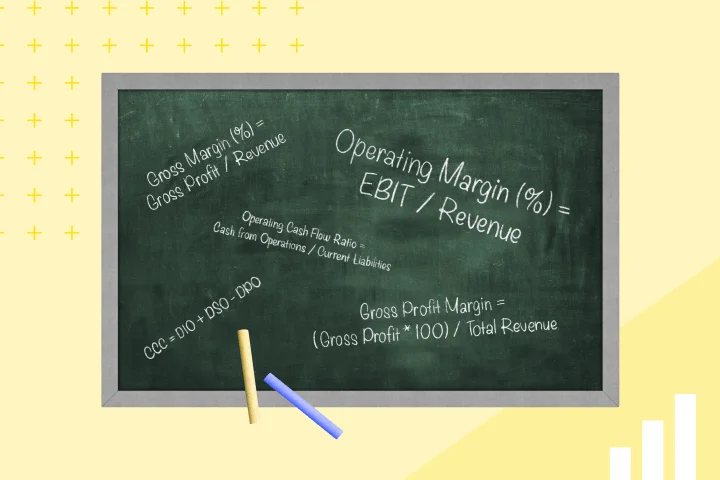It’s no surprise that tail spend is often overlooked when considering cost reduction strategies. Because these transactions involve “minor increments,” many companies don’t put much effort into curtailing them. But in reality, effective tail spend management can help significantly lower costs, increase various departments’ efficiency and productivity, and reduce risk through improved compliance.
What Is Tail Spend?
Tail spend refers to low-value transactions that occur in high volume. These transactions usually involve a new or infrequent vendor, may occur only once or once every few years, and are relatively inexpensive. Typically, purchases of this nature are not obtained through purchase orders, and are therefore not overseen by the procurement department.
In most organizations, a few select vendors account for most of the company’s spending, and purchase orders are used for these goods and services. But sometimes a department makes an unplanned purchase, such as ordering lunch for employees or sponsoring a local event. These purchases are rare and the transaction amounts are negligible.
Different Ways of Defining Tail Spend
Organizations often define tail spend differently. Some prefer to describe tail spend as non-strategic spending according to the Pareto Principle, while others define it based on a specific spend threshold.
Based on the Pareto Principle (80/20 Rule)
This is a general rule applied in procurement to differentiate between strategic spend and tail spend. Essentially, the Pareto Principle (also known as the 80/20 rule) states that 80% of the organization’s total spending occurs with just 20% of the organization’s vendors. This 80% is planned strategic spending that’s acquired through purchase orders. The other 20% of the organization’s spending occurs with the remaining 80% of the vendors, and is considered tail spend. Tail spend purchases are unplanned and not managed by procurement.
Based on Spend Threshold
Some organizations define tail spend based on a specific spend threshold, which is an amount set by procurement. Approval is not required for purchases under the threshold. Spend thresholds are arbitrary and vary widely among individual organizations. The organization’s size typically determines the spend threshold; as the size of the organization grows, the threshold increases. Transactions under the threshold are considered tail spend.
How to Manage Tail Spend
Traditionally, many companies have relied on the corporate card to pay for business expenses. The sheer volume of transactions, coupled with a lack of visibility, make it difficult to track and effectively manage company payments. That’s where spend management software comes in, and can help you tackle tail spend.
1. Start by Identifying It
The first step in managing tail spend is to identify the purchases that constitute tail spend as defined by the organization, according to the Pareto Principle or a spend threshold. The organization must collect transaction data related to purchases that meet the criteria of tail spend. Once the data is collected, spending analysis is conducted by vendor, category, department, etc.
After the preliminary analysis, transactions are further segmented into the following spend categories:
- Hidden tail
- Head of the tail
- Middle of the tail
- Tail of the tail
Hidden tail includes purchases from the top 20% of vendors that are usually included in strategic spending, but applies to certain items or services that were purchased outside the contract. Head, middle, and tail segments represent purchases of decreasing amounts (head being the highest and tail the lowest). These segments allow the organization to identify areas of possible savings more easily.
2. Streamline Your Internal Processes
Various internal processes can be streamlined to better manage tail spend. The company may require that all purchases, or purchases for certain categories of items, must begin with a purchase requisition. For example, if a department needs to purchase additional parts or services from a vendor with whom the company has a contract, using a purchase requisition would let procurement know that the purchase is outside the scope of the contract or the vendor hasn’t fulfilled their agreement.
A purchase requisition may not be optimal for certain purchases, such as an impromptu employee lunch. Instead, the organization can issue business cards to select employees with pre-approved spending limits and pre-approved vendors.
Managing tail spend is challenging if internal processes remain the same. Improving internal processes allows for increased insights into spend data and additional control over maverick and spot buying. It enables more of the organization’s non-strategic spending to become strategic spending, thus reducing tail spend.
3. Crunch the Data
Procurement should analyze previously collected data to provide insight into how the organization can improve overall tail spend management. Analyzing the information manually is nearly impossible, but choosing the right spend management software can result in valuable insights into the company’s spending.
Analysis with spend management software gives you real-time insight into company payments and can help the procurement department get more control over non-strategic tail spend. The software consolidates all company payment data in one place and can alert you to duplicate charges and wasteful spending. It can also prevent charges from unapproved vendors, and help you predict future spend trends.
Benefits of Tail Spend Management
Effective tail spend management has a number of both short- and long-term benefits.
Significant Cost Savings
The ultimate goal of tail spend management is to reduce costs. Equipping select employees with business cards and setting spending limits with only pre-approved vendors allows for more oversight and control of ad hoc spending. Out-of-scope purchases with vendors can be identified to renegotiate those contracts, leading to additional cost savings.
Boost Efficiency & Productivity
Transitioning some non-strategic tail spend to strategic spending will give control of the purchasing to the procurement department and allow other departments to focus on value-adding obligations. It can also help reduce or limit the number of suppliers that your procurement team needs to manage, allowing them to focus on contracts with larger, more critical vendors.
Reduced Risk Through Improved Compliance
As you get more insight into your company’s tail spend, potential risks and non-compliance issues can be identified and corrected. With spend management software, procurement can prevent uncontrolled spending and give you real-time alerts about possible fraudulent spending. Purchases outside the scope of a contract with a vendor may indicate non-compliance issues.
With the right tools, proper tail spend management can help you save costs, eliminate out-of-policy spend and protect you from potential fraud. So the question is… have you looked into your company’s tail spend recently?
FAQs
Tail spend refers to high-volume, low-value transactions in an organization involving infrequent purchases from new vendors, typically falling below a specific spending threshold and often bypassing the procurement department’s oversight.
Organizations define tail spend either using the Pareto Principle (80/20 rule) to classify non-strategic spending with the remaining vendors or by setting a spend threshold for categorizing such transactions.
Effective tail spend management involves the following steps:
– Identification based on predefined criteria.
– Streamlining internal processes, like purchase requisitions or pre-approved business cards.
– Data analysis using spend management software to gain insights, detect duplicates, and predict trends.
Tail spend management offers several benefits, including cost savings, increased efficiency, risk reduction through compliance, and protection against out-of-policy spend and fraud.
Spend management software plays a vital role by consolidating payment data, providing real-time insights, detecting wasteful spending, and facilitating data analysis for better control over tail spend.
-
Get the latest blogs from Mesh by subscribing to our newsletter







